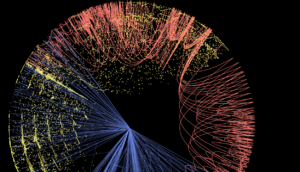
post
November 23, 2023
Meet the Intelligent Digital Worker, Your New AI Teammate
With all of the hype and noise surrounding generative AI, it’s hard to know how this powerful technology fits into individual organizations—meeting the individual needs of their employees and customers. The answer is complex, but building a fleet of Intelligent Digital Workers, or IDWs, is a strategic goal that’s achievable using tools that are currently available in the marketplace.
In essence, IDW is a fancy word for “bot.” In the current marketplace, however, which is loaded with hype and unmet promises, “bot” feels almost pejorative and doesn’t adequately illustrate the depth of an IDW’s capability. .. In computer reality, an IDW is a collection of skills, analogous to a folder holding files or a domain name housing web pages. The objective of an IDW is to take on some of the tasks that humans typically perform. IDWs are not meant to replace humans, however. They are meant to provide humans assistance, improving our efficiency by automating redundant tasks and creating more time for creative problem solving (something we humans are exceptionally good at).
For IDWs to provide this kind of dynamic assistance, here are six high-level functions to build use cases around:
Managing Information
IDWs use machine learning to provide a model of various information sources a user interacts with (email, appointments, web pages, and files). This model is queryable and can communicate conversationally, identifying which team members are working on which projects, what roles they play, and how documents and deliverables are related to different individuals. IDWs are proactive, keeping users in the loop by delivering information and seeking information behind the scenes. IDWs can learn user preferences surrounding task completion and can manage busy schedules intelligently.
Creating Useful Artifacts
IDWs can help users put together new documents, leveraging learning about structure and content from existing documents as well as other documents fabricated using generative AI tools.
Communication Lubricant
IDWs can assist users as they interact with other people across electronic channels (like video conferences, messaging services, and emails) and in face-to-face meetings. Generating meeting transcripts, tracking action items, and responding based on roles different team members play. IDWs can also package information in advance of meetings that can be read ahead of time or accessed in real-time.
Automating Routine Tasks
IDWs can automate routine tasks like travel authorizations or expense tracking, and can learn new tasks by working with users. A ticketing system tracks the assignment of tasks to other IDWs and humans. IDWs can also seek out and acquire new electronic services and people that can help complete tasks.
Customer Flow and Handoff
An IDW can help manage communications with customers across all major channels, either by handling them directly or through Human-in-the-Loop, which brings employees into certain processes to expedite and manage customer requests.
Digital Data Twin
An IDW can maintain a digital data twin of your organization to provide context. This is a major piece of something we’ve been calling organizational AGI (artificial general intelligence). A robust digital twin of an organization can be optimized to extract information from unstructured data and map it to information across tables and databases, creating a scenario where an organization truly “knows” everything it knows.
Stay up to date
Latest Articles




